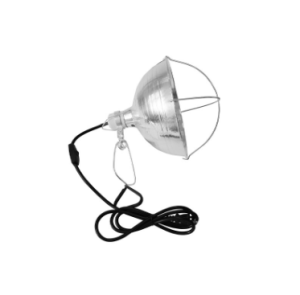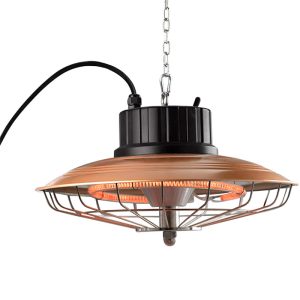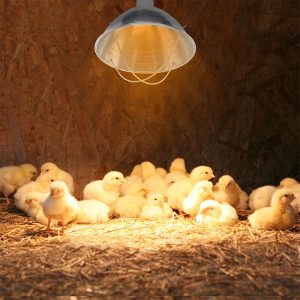No. The lighting duration for a Brooder Lamp for Chicks is not fixed and should be dynamically adjusted according to the chicks’ age, physiological development, and the type of lamp used. The core principle is: ensure survival and adaptation initially, cultivate natural rhythms later, and avoid stress throughout the entire process.
I. The Principle of Light Management: Why Not 24 Hours Fixed?
Initial 24-hour lighting is based on the physiological needs of chicks:
- Weak Thermoregulation: Requires stable temperatures provided by the lamp to prevent huddling and chilling at night.
- Poor Vision and Feeding: Continuous light helps them see and locate feed and water, significantly improving the initial feeding rate and survival rate.
- High Energy Demand: Meets their habit of frequent, small meals, ensuring nutritional intake.
However, prolonged 24-hour lighting disrupts sleep, affects growth hormone secretion, and increases the risk of pecking habits, so it must be gradually reduced.
II. Phased Light Management Plan
- Initial Stage (Days 1-3): 24-hour lighting for strong support
- Duration: 24 hours uninterrupted.
- Intensity: Approximately 10 lux (e.g., height of a 60W incandescent bulb or equivalent LED).
- Lamp Type Suggestion: Red light bulbs are preferred to reduce stress.
- Transition Stage (Days 4-7): 22-24 hours of lighting, introducing darkness
- Duration: Introduce 2 hours of darkness per day (e.g., 2 AM – 4 AM).
- Intensity: Maintain 10 lux.
- Technique: Gradually dim the light 5-10 minutes before the dark period to avoid startling the chicks. If huddling or loud chirping occurs, check if the temperature is too low.
- Growth Stage (Days 8-28): Steady reduction, cultivating rhythm
- Week 2 (Days 8-14): Reduce to 18-20 hours of light; intensity reduced to 5 lux.
- Weeks 3-4 (Days 15-28): Reduce by about 3 hours per week, gradually decreasing to 15-18 hours of light.
- Key Point: Ensure peak feeding times coincide with the light period.
- Pre-weaning Stage (After Week 5): Integrating with nature
- Duration: Reduce to 12-14 hours, synchronizing with the local natural day length.
- Intensity: Reduce to 3 lux (just enough to see the feed).
- Operation: Utilize natural light during daytime; only low-power supplemental or emergency lighting is needed at night.
III. Control Techniques for Different Brooder Lamp Types
- Incandescent/Infrared Lamps: Light and heat are combined. Adjust intensity by changing bulb wattage (e.g., 60W → 40W → 25W). Turn off this lamp during dark periods and use a ceramic heat emitter alone for warmth.
- LED Brooder Lamps: Most flexible. Allow stepless brightness adjustment (100% → 50% → 30%), and light can be separated from heat. Use the gradual dimming mode to simulate sunset and reduce stress.
- Ceramic Heat Emitter + Separate Light Source: Optimal control setup. The ceramic emitter provides heat (no light), and the separate light provides illumination. This allows strict control of light duration according to the plan, with only the ceramic emitter on at night for warmth.
IV. Adjustments for Special Situations
- Weak Chicks: Extend light duration by 2 hours and maintain higher intensity to ensure adequate time for eating and drinking.
- Rainy Days/Winter: Provide artificial light during the day to maintain 5 lux intensity. In winter, total light duration can be extended by 1-2 hours to compensate for feeding time.
- High-Density Rearing: Slightly reduce light intensity by 1-2 lux and prioritize using red light to reduce pecking and flock excitement.
V. Common Misconceptions
- Myth: More light is always better. Fact: Excessive light causes sleep deprivation, hindered growth, and increases pecking risks.
- Myth: Brighter light is better. Fact: Overly bright light causes chick tension, fatigue, and intensifies competition.
- Myth: Turning lights off directly is fine. Fact: Sudden darkness causes panic and huddling. The correct method is to dim lights gradually or maintain a very weak safety light.
Summary:
The key to using a Brooder Lamp for Chicks lies in observation and adjustment. An ideal lighting program should result in chicks that are: actively feeding, resting quietly, and evenly distributed. If huddling, panic, or pecking occurs, first check and adjust the light duration and intensity.







